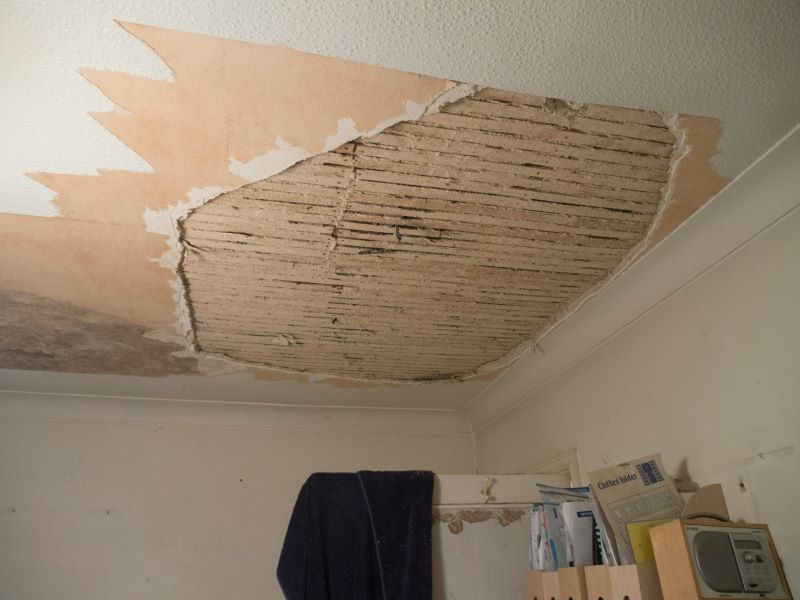Home renovation projects rarely go as planned, and discovering unexpected issues can quickly turn an exciting home improvement project into a stressful situation. How to address unexpected issues discovered during renovations?
The most effective way to handle unexpected renovation issues is to stop work immediately, consult relevant professionals (structural engineer, contractor, or specialist), assess the full scope of the problem, and adjust your budget and timeline accordingly.
While this straightforward approach works for most situations, you’ll want to keep reading to learn about specific strategies for different types of unexpected issues – from structural problems to hazardous materials – as each requires a unique response plan and may involve different professionals and regulations.
What To Do When You Discover Structural Issues During Renovation
Structural problems are among the most serious issues you might encounter during renovations. If you notice sagging beams, cracks in load-bearing walls, or signs of foundation problems, immediately halt all work. Contact a structural engineer within 24 hours to assess the situation and provide a detailed report.
The engineer’s assessment will determine whether the issue requires immediate stabilization or if work can proceed with modifications. Expect to pay between $300-$800 for the initial consultation, and be prepared for potential additional costs ranging from $2,000 to $20,000 or more for structural repairs.
How To Handle The Discovery Of Hazardous Materials
Finding asbestos, lead paint, or toxic mold during renovations requires immediate attention and specific safety protocols. Don’t attempt to remove these materials yourself, as improper handling can create serious health risks. Instead, contact a certified hazardous materials professional for testing and safe removal.
Commercial general contractors maintain relationships with certified hazardous materials specialists and can seamlessly coordinate this process as part of your overall project management. Testing typically costs $200-$800, while professional removal can range from $500 to several thousand dollars, depending on the extent of the problem. Always obtain proper documentation of the removal for future reference and property records.
What To Do When Plumbing Or Electrical Issues Surface Mid-Renovation
Hidden plumbing and electrical problems often appear once walls are opened up. Common issues include outdated wiring, corroded pipes, or non-compliant installations. Contact a licensed plumber or electrician immediately for assessment, as these issues can pose serious safety risks and often require permits for repairs.
Be prepared for cascading effects – fixing one section of plumbing or wiring often reveals the need to update connected systems. Budget for 10-20% above the initial estimate to account for these potential discoveries, and ensure all work meets current building codes.
How To Revise Your Budget When Unexpected Issues Arise
Renovation surprises often lead to budget overruns, making it crucial to have a solid financial plan. Start by maintaining an emergency fund of 20-30% of your total renovation budget for unexpected issues. This buffer should be separate from your central renovation budget.
If costs exceed your buffer, explore financing options immediately. These might include home equity loans (typically 3-7% interest rate), construction loans, or credit cards as a last resort. Consider pausing non-essential aspects of the renovation to redirect funds to critical repairs.
Create a priority list dividing issues into “must-fix” and “nice-to-have” improvements. This will help you make difficult financial decisions when resources are limited. Remember that structural, safety, and code compliance issues should always precede aesthetic enhancements.
How To Handle Timeline Delays Due To Unexpected Discoveries
Construction delays are almost inevitable when unexpected issues arise, but proper management can minimize their impact. Start by asking your contractor for a revised timeline including the repair work and the original renovation plans. A typical delay for moderate issues ranges from 2-6 weeks.
Communication becomes critical during delays. Keep all parties informed, including contractors, suppliers, and any other trades scheduled to work on your project. Review your contractor agreements to understand how delays affect pricing and scheduling commitments.
If the delays significantly extend your renovation timeline, consider creating a temporary living arrangement plan. This might mean postponing the move-in date, extending a rental agreement, or setting up a functional temporary space within your home. Factor these additional living expenses into your revised budget.
Conclusion
Before starting your next renovation project, create that crucial emergency fund of 20-30% above your planned budget and keep it completely separate from your main renovation money. This single action will give you the financial flexibility to address unexpected issues promptly and properly, preventing the typical cascade of problems that occur when homeowners try to cut corners due to budget constraints.

